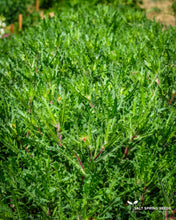Blessed Thistle is an interesting and attractive non-invasive annual that has been used for centuries as a cure-all herb. Also called Holy Thistle and native to the Mediterranean area, it is freely branching with toothed leaves that have spines. In mid-summer the yellow flowers appear, surrounded by long thorns. The plant has a sprawling habit instead of standing upright.
Tender leaves can be eaten, or dried leaves can be used to make teas. The Blessed Thistle herb has a history of being used to promote milk production in lactating women and for menstrual problems.
Nowadays herbalists recommend Blessed Thistle primarily for the stomach and liver. It treats liver congestion, loss of appetite, dyspepsia and mucous conditions. It lowers fevers, resolves blood clots, relieves jaundice and stops bleeding. Recent research has also indicated that Blessed Thistle has antiviral, anti-inflammatory, and antioxidant properties.
Consistent use of Blessed Thistle strengthens the brain and memory and helps clear depression. A few drops of Blessed Thistle tincture promote abundant milk in nursing mothers. It also stimulates and regulates menstruation and is helpful during menopause.
Blessed thistle is best sown directly outdoors in the spring after all danger of frost has passed. The seeds require darkness to germinate, and should be planted at a depth of 1/4 inch. Plant them in an area of full sun in ground that offers good drainage. Rocky and poor soil is acceptable. Keep seeds moist until germination. The mature plant should be cut back by 1/3 and harvested 2-3 times during a growing season. If a few flowers are allowed to go to seed, it should return the following year.
Blessed thistle may be brewed to relieve indigestion. One cup of boiling water may be added to 1 to 3 teaspoons of the dried herb. Let the Blessed Thistle steep for 5 to 15 minutes. Strain out the dried herb and enjoy the brew.
Harvesting seeds can be difficult because of the spines. It is best to cut off the flower heads and allow them to thoroughly dry before walking on them in a threshing box or Rubbermaid. Then screens work to separate the beautiful seeds from the chaff.
Blessed Thistle has a prehistoric look that is sure to stop you in your tracks when you’re in its neighbourhood.




